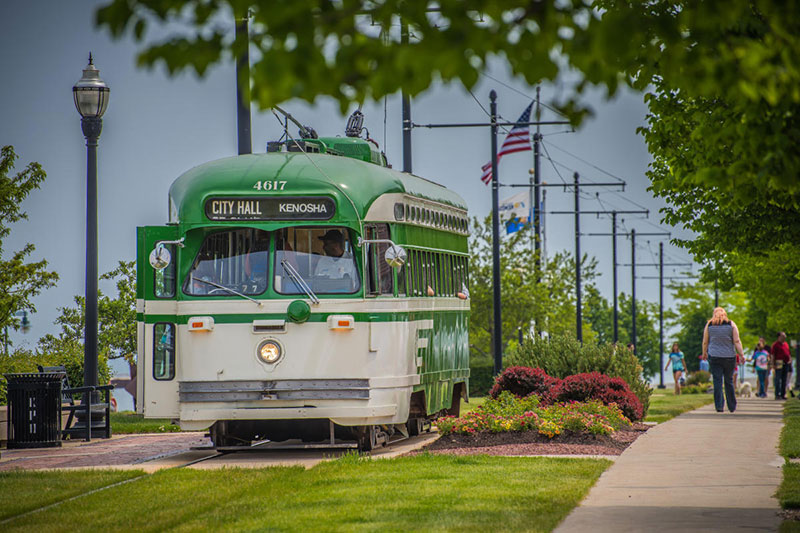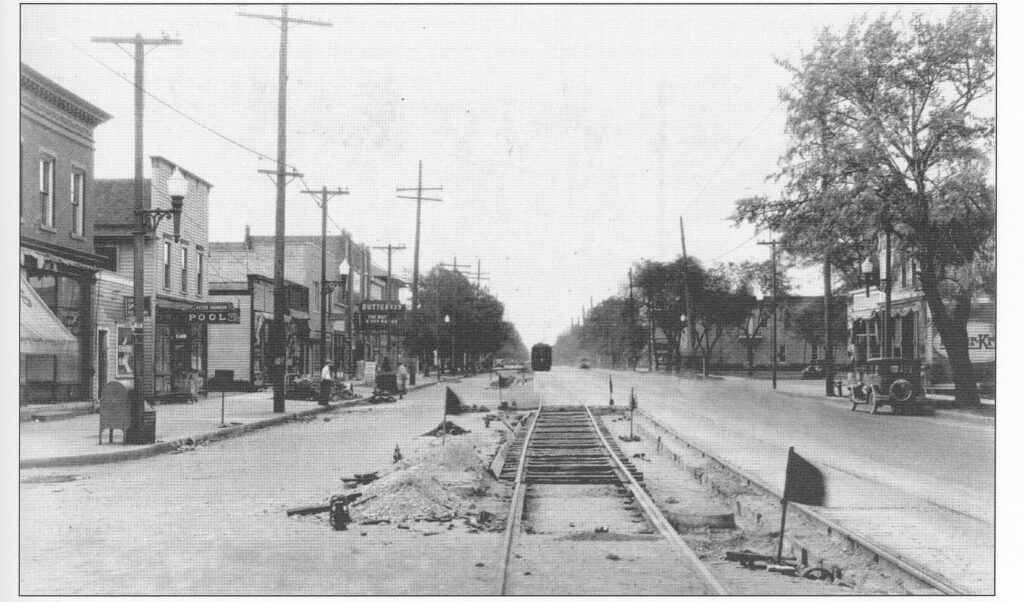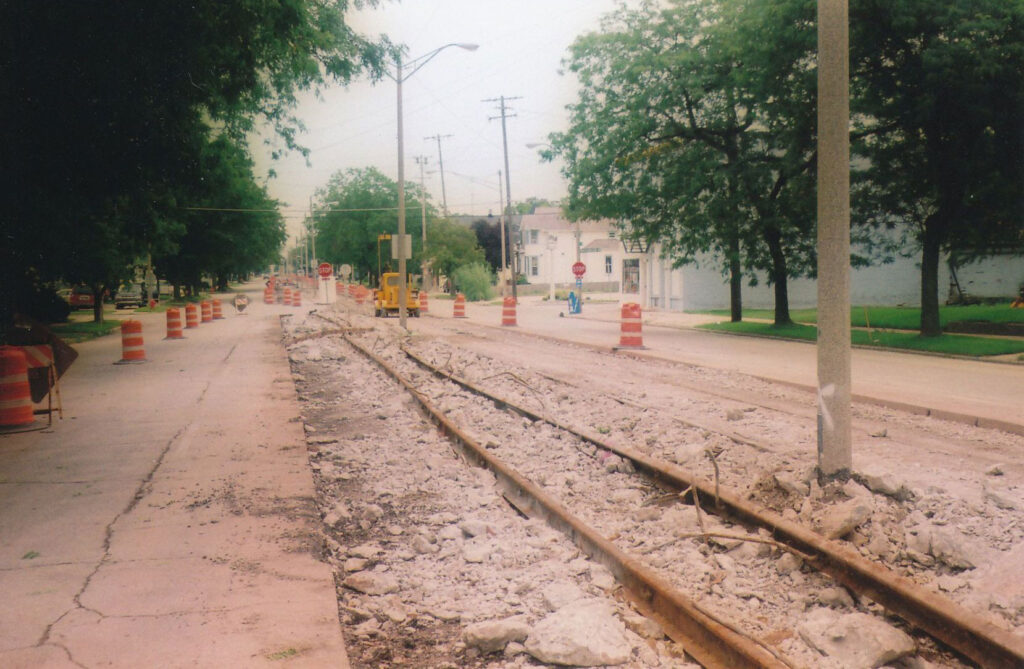Author’s note: Kenosha changed its street-naming system from names to numbers in 1925. For clarity’s sake, and since this story covers both periods, I’ve used the current system of numbered streets.
The MRK Interurban
An unfortunate difference between the United States and most of Europe is that Europeans still see railroads as a very viable public transportation option, but this country sees rail travel as an anachronism. Economics or climate change may someday change that way of thinking, but for now, the automobile still rules.
In 1900, however, intercity train travel was cutting-edge technology. In addition to well-known national or regional railroads in this area, like the Milwaukee Road and the Chicago and North Western, almost every medium-sized city had access to both an intercity “interurban” system and to a city-wide streetcar system. Kenoshans had fabulous access to both until 1947.
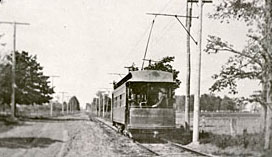
Both the interurbans and the streetcars were generally one-car operations, although two-car “articulated” trains came along in later years. The Milwaukee, Racine & Kenosha Electric Railway (MRK) began operations on June 1, 1897. That line ran from Milwaukee’s city hall to the northern city limits of Kenosha. Between Racine and Kenosha, the original MRK ran parallel to the Chicago & North Western tracks before veering off to the southeast at 29th Street, or about at the middle of Carthage College’s current 14th Avenue parking lot. From there, the MRK followed what is now the Sheridan Road truck route to Seventh Avenue, with the line terminating at what is today Seventh Avenue and 38th Street (known as Limit Street at the time). By 1899, the MRK was absorbed by The Milwaukee Electric Railway and Light Company (TMER&L) but retained its MRK name.
Even though the MRK met a Kenosha Electric Railway at the city limits, the Kenosha city council initially declined to allow the TMER&L a franchise to extend its services into downtown. Instead, a pair of somewhat-notable buildings were constructed at 38th Street to serve as waiting rooms. Right at 38th Street on the east side of the road was a small MRK waiting room. The concrete floor of that waiting room remains to this day. Just to south was Krisor’s Saloon, which also served as a liquor store, restaurant and additional waiting room. Beginning in 1912 or 1913, Kenosha granted permission to TMER&L to extend its services down Seventh Avenue to Market Square, with new Kenosha Public Services Building serving as a terminus.
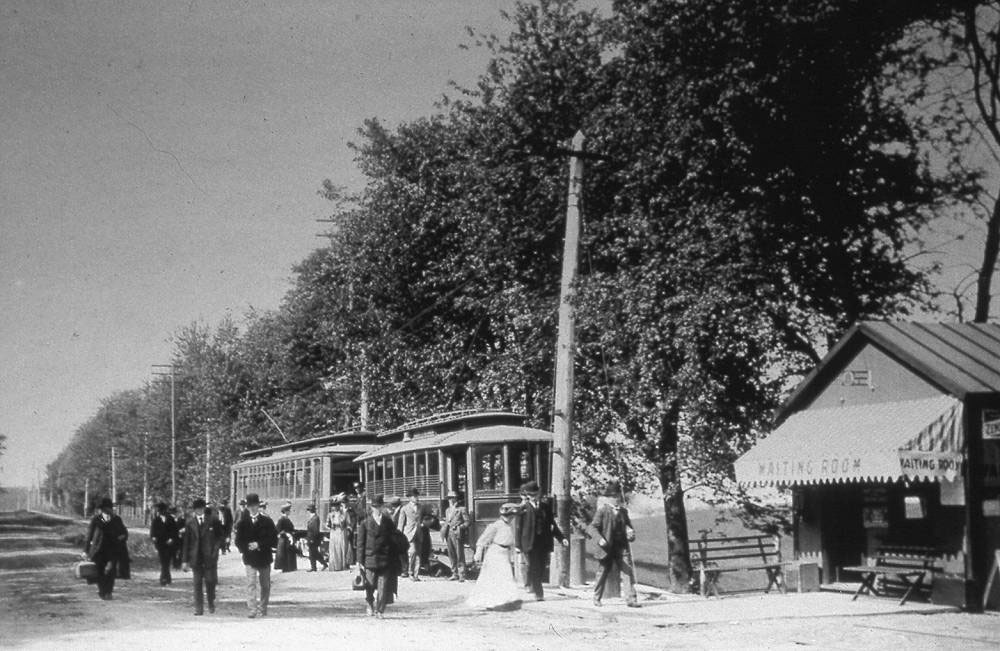
By 1924, the original TMER&L infrastructure was becoming obsolete. Trains that ran on city streets or off to the side on local highways held back the potential of high-speed intercity travel. The list of obstacles to true rapid transit also included poor roadbeds, sharp curves, heavy grades and multiple grade crossings. The infrastructure issues were leading to increased competition from both the Chicago and North Western Railroad and the Chicago, North Shore & Milwaukee electric line.
Beginning in 1925, TMER&L began to transform its system into a true rapid transit operation, using private right-of-ways and new cars known as “Green Specials.” The private right-of-ways kept grade crossings to a minimum. Between 1928 and 1932, as part of that transition, the MRK began to bypass city streets in St. Francis, Cudahy and South Milwaukee, while simultaneously upgrading its track along the entire line. To further speed the route, station stops were eliminated between South Junction (near Oak Creek) and Racine.
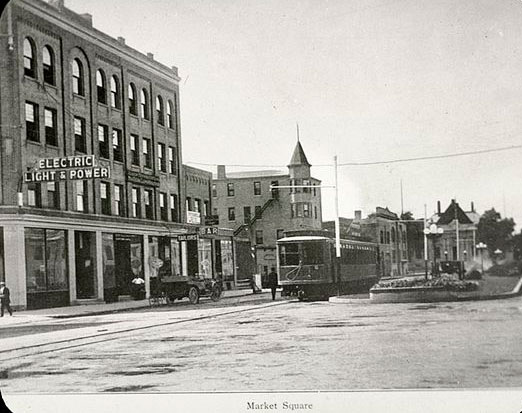
In 1929-30 and undaunted by the early days of the Depression, TMER&L purchased eight second-hand cars from the Indianapolis & Cincinnati Traction Company. These longer cars were spliced together by TMER&L and articulated. The articulated cars, known as duplexes, became standard equipment on the MRK.
North of Racine, the new line ran on private right-of-way all the way from South Junction to the Gould Street station on the north side of Racine. From there, it ran on city streets through Racine before returning to its own right-of-way near the former J.I. Case plant at Mead and 24th Streets in South Racine. South of J.I. Case, the new line ran at ground level and parallel to the Chicago & North Western tracks all the way to 35th Street in Kenosha where the two lines followed the current Union Pacific viaduct toward downtown.
Following a flag stop at Washington Road, the MRK veered off the southeast at 45th Street on a wooden and elevated right-of-way. South of 45th Street, this private track ran over what is now a vacant lot just north of 50th Street and just west of Sheridan Road, crossing over a Chicago & North Western spur line that serviced the Simmons Company factory on the lakefront. The route continued over land that is now just east of the Kenosha Bulk & Recycling Drop-Off Site at 1001 50th Street. The line then crossed an exposed Pike Creek just north of the old Allen Tannery hide house (currently Captain Jim’s Yacht Sales) and then crossed Sheridan Road immediately north of the hide house. The last three blocks of the run, moving slowly downhill back to grade level, ran straight south between Sheridan Road and Eighth Avenue, with Pike Creek just to the east. Pike Creek, now covered up in the downtown area, ran in a U-shape from the head of the harbor to about 52nd Street and Eighth Avenue (just west of the proposed Brindisi condominium/apartment building) before turning northwest toward Washington Park.
The new line officially opened on April 17, 1932, along with a new Kenosha depot at Eighth Avenue and 55th Street. The running time between that depot and the Milwaukee Public Service Building depot at Michigan and Third Streets was shortened from two hours and two minutes to an then-astounding one hour and 10 minutes.
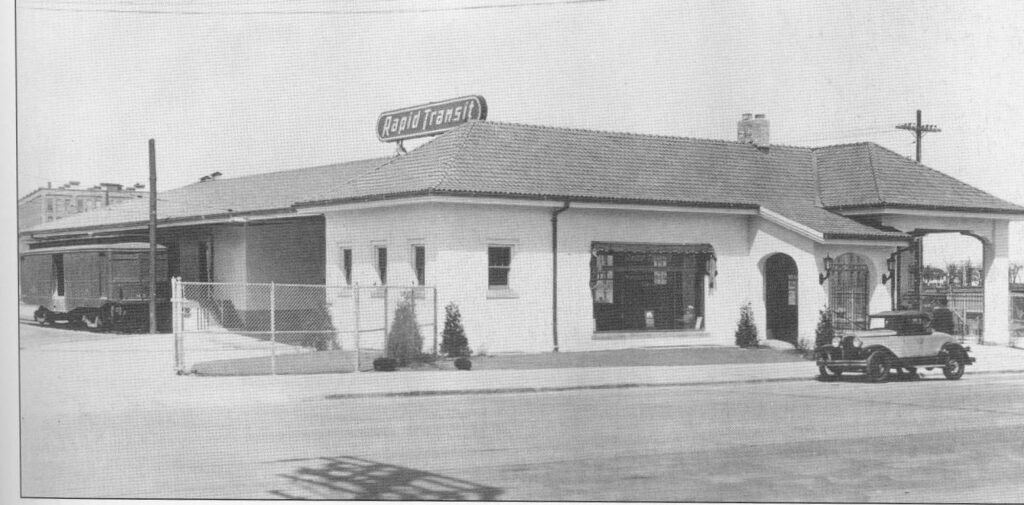
In 1938, the MRK was sold to the Milwaukee Electric Railway and Transport Company. Between 1943 and 1944, it was sold piecemeal to Henry P. Bruner, who renamed it the Kenosha Motor Coach Line. Sadly, the Racine to Kenosha segment was abandoned on Sept. 13, 1947, with MRK’s final closure coming on Dec. 31, 1947 when Milwaukee to Racine service ended.
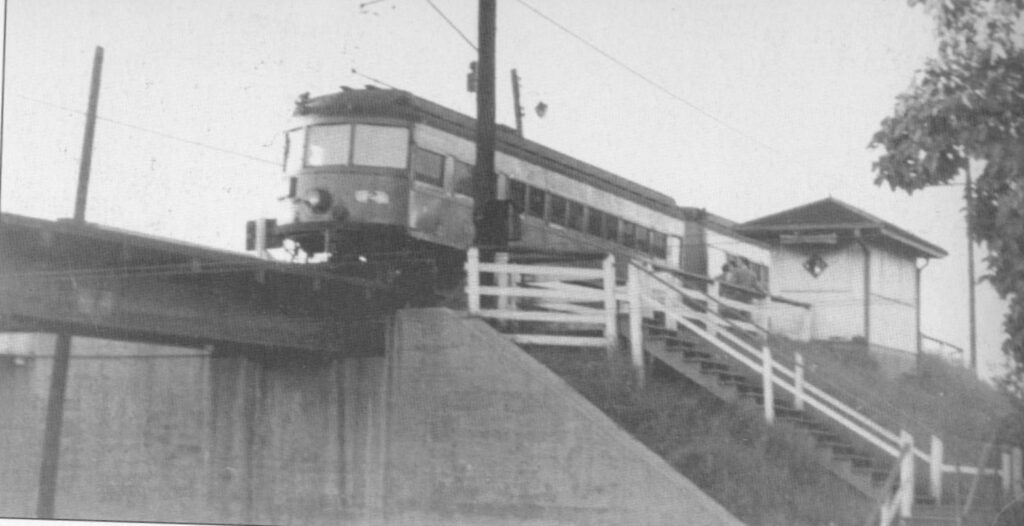
Almost nothing of the MRK or its environs remains. The elevated right-of-way was torn down for scrap not long after the line was abandoned in 1947. Pike Creek was covered up all the way from the harbor to Washington Park in the early-1960s. The Chicago & North West spur line was torn up around 1990 when the Simmons/American Motors plant was razed. The last link to the MRK was probably the Seventh Avenue tracks, which were visible for a few months in the summer and fall of 2007 when the city opened up the median all the way from 50th Street north to remove them, as part of a street renewal program.
The Kenosha terminal remained open as the Union Bus Depot, which was owned by TMER&L. Subsequently, the terminal serviced bus lines by Cardinal, Greyhound and a local Kenosha to Racine line. In 1956, the building was taken over by Vena’s Pizzeria before being demolished in 1965.
The Kenosha Electric Railway
Running concurrently with the regional interurban system was a Kenosha street railroad. The first attempt at launching a city system was made in 1896 by a Chicago company known as the Kenosha Electric Railway Company. Between 1900 and 1901, three miles of track were laid before the company failed. A second company, formed by the Chicago firm of Haines & Clausen, was formed in 1902 and retained the Kenosha Electric Railway name. In late-1902, the company was sold again to Kenoshan Bion J. Arnold. The track construction was completed, and the company began operations on Feb. 1, 1903.
The 1903 system, with 4.3 miles of track, had three routes, all originating at Market Square, which was the corner of Sixth Avenue and 56th Street. The Milwaukee Avenue route ran north along Sixth Avenue, over the Pike Creek on the Sixth Avenue bridge to Seventh Avenue and then north all the way to 38th Street.
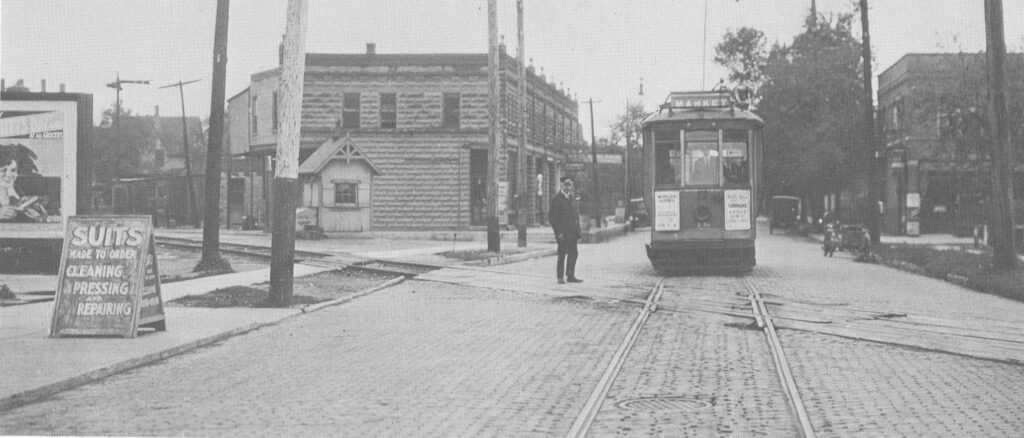
The Market Street line ran west from Market Square before turning south on 24th Avenue (about where the rear of Jockey International is today) to eastbound 63rd Street. On its return route back on 63rd Street, the line went north at 13th Avenue, then went east on 59th Street to northbound Sixth Avenue and back to Market Square.
The Elizabeth Street line ran from Market Square south to 59th Street. From there, it turned west to 13th Avenue and the Chicago and North Western Railroad tracks, then south on 13th Avenue to 63rd Street and west on 63rd to 24th Avenue.
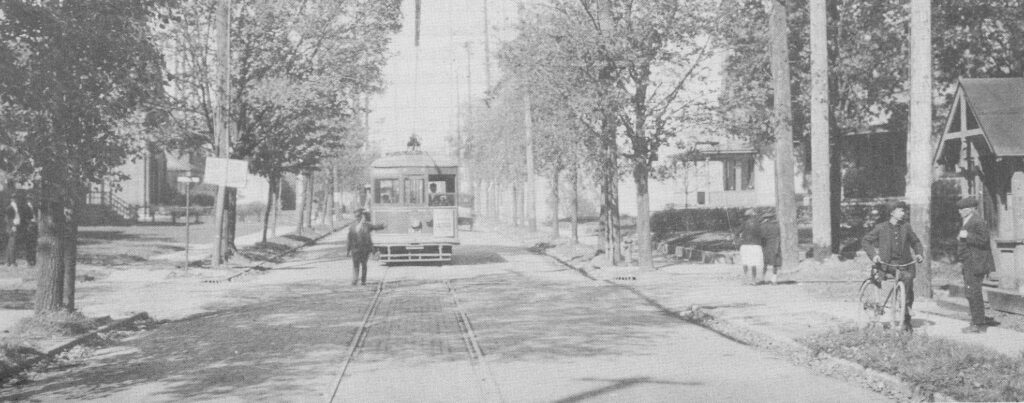
The three lines carried an amazing 378,000 passengers in its first 10 months of operations. Not bad for a town of about 13,000 people at the time. A 1905-09 system expansion added a fourth line, the Grand Street route, which originated at Market Square, ran west on 56th Street for a few blocks, then north on Sheridan and west on 52nd Street all the way to 26th Avenue.
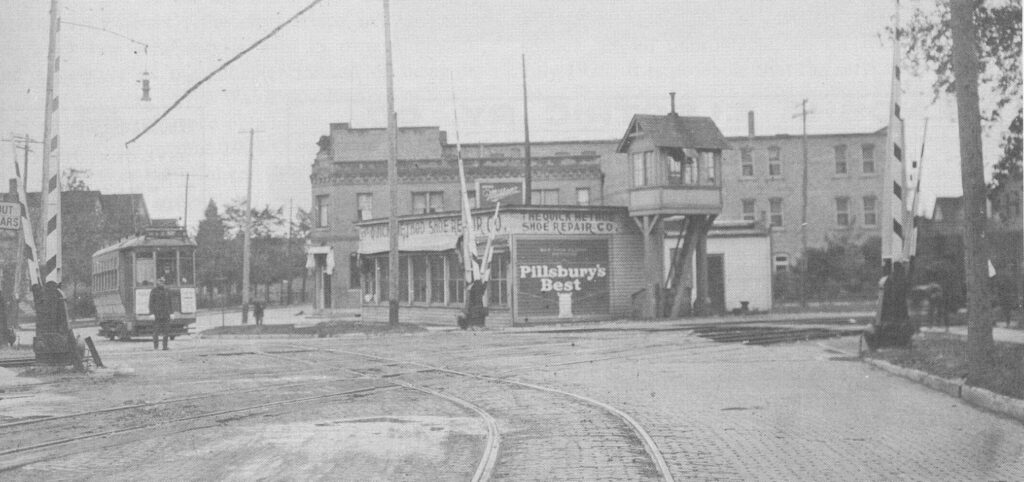
The 1905-09 expansion also added a new branch off the Elizabeth Street line that veered south at Sheridan Road and continued as far as 71st Street, then just beyond the city limits. The final piece of the expansion extended both the Market Street and Elizabeth Street lines along 63rd Street from 24th Avenue to then terminating at the Chicago & Milwaukee Electric Railroad depot (later known as the Chicago, North Shore & Milwaukee) at 2703 63rd Street.
The city system was sold to Investment Registry Limited, a British investment firm, in 1909 and then purchased by the North American Company in 1912, which made the railroad part of its Wisconsin Gas & Electric holding company. Wisconsin Gas & Electric also owned The Milwaukee Electric Railway and Light Company (TMER&L). The new company double-tracked most of the line along 7th Avenue to allow interurban cars from Milwaukee to enter the business district.
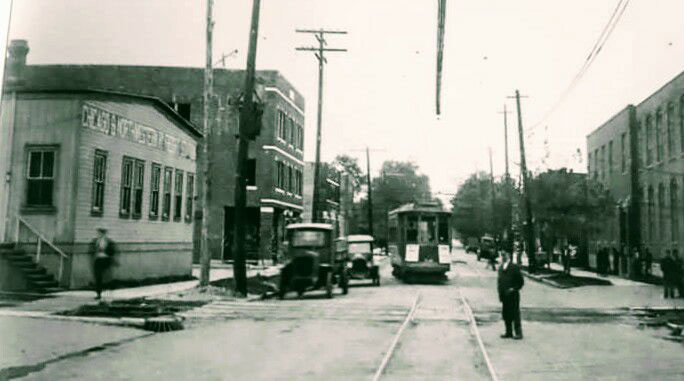
The system was completely modernized in the early 1920s, and a car barn was built at the southeast corner of Sheridan Road and 54th Street. By 1925, as part of that upgrade, the section of tracks on 13th Avenue between 52nd and 63rd Streets was abandoned. In 1927, part of the system on the near-south side was realigned, with the Sheridan Road line going west on 58th Street from Sixth Avenue, instead of 59th Street, which eliminated two-way operations on a single track along 59th Street. By the way, when Kenosha’s Witico Development Corporation renovated the Barden Building in 2020 and re-did the sewer lines at Seventh Avenue and 58th Street, they uncovered the 58th Street track. A portion of that track was incorporated into the basement floor of Public Craft Brewery.
The end came for the Kenosha Electric Railroad in 1931 when the Wisconsin Public Service Commission granted the company permission to abandon the rail lines and adopt trackless trolleys. The trackless trolleys, which began running in 1932, were similar to today’s “Lakefront Trolley” that the city operates between downtown and Carthage College.
A rail system returned to Kenosha, on a very limited basis, in 2000 when the Kenosha Electric Streetcar began operations. The downtown-only loop runs between the Metra Station and Celebration Point with stops along both 54th and 56th Streets, including the Civil War Museum, the Kenosha Public Museum and the Dinosaur Discovery Museum.
In 2014, the Kenosha city council voted to approve an additional north-south crosstown line that would have run north to Carthage, but the expansion was cancelled in 2015 due to unanticipated cost overruns. In 2007, the track in the Seventh Avenue median, all the way from 50th Street north to 38th Street was removed, along with its cement roadbed, as part of a street renewal program.
Acknowledgements
TM: The Milwaukee Electric Railway & Light Company Bulletin 112 by Joseph M. Canfield, 1972
Kenosha on the Go by the Kenosha Streetcar Society, 2008
“Electric Railway Takes to the Streets, but Not Without a Fight,” by Diane Giles in the Nov. 6, 2007 Kenosha News
Special thanks to Jonathan Martens and the Kenosha History Center

